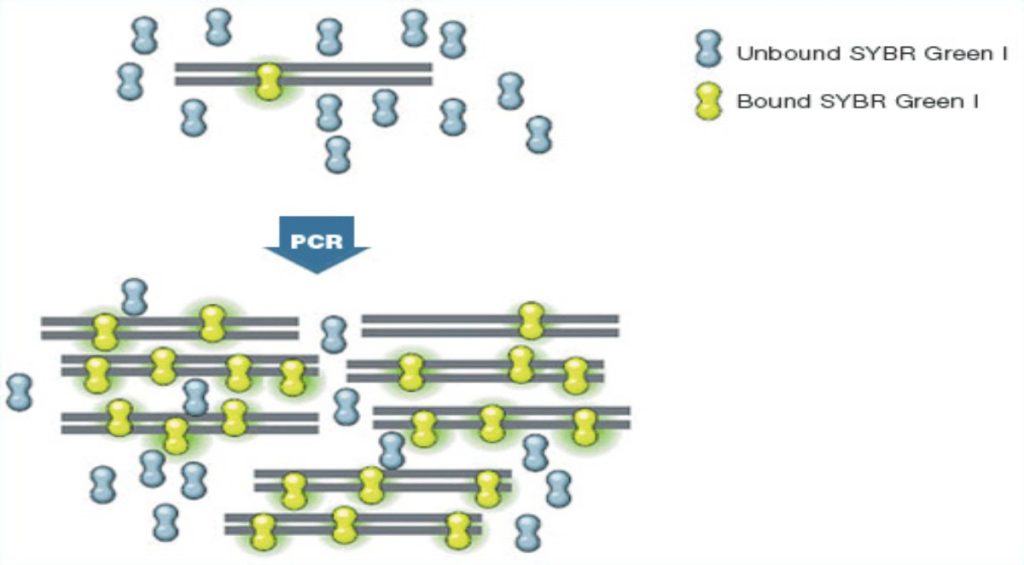SYBR Green qPCR supermixes are compatible with most protocols for qPCR. They are offered with a proprietary passive reference dye. In addition, SYBR Green qPCR supermixes are available with either antibody-mediated hot-start Taq or Sso7d fusion polymerase, which provides increased stability for the polymerase-template complex, enhancing performance. Sso7d is a double-stranded (ds) DNA–binding protein that increases speed and processivity and increases tolerance to PCR inhibitors.

SYBR Green is a dsDNA-binding dye that intercalates nonspecifically into dsDNA, allowing measurement of the amount of PCR product. SYBR Green fluorescence increases up to 1,000-fold upon intercalation with dsDNA. As amplification proceeds, the amount of DNA product increases, and hence the number of SYBR green molecules incorporated into DNA increases. Since the increase in fluorescence is proportional to the amount of product accumulated, SYBR Green qPCR can be used for relative DNA quantification.
In relative qPCR the readout is the number of cycles required to reach a threshold level known as Cq or CT, which is during the geometric phase of PCR. Since the intercalation of the dye is proportional to product synthesized, the increase in fluorescence of SYBR Green in the qPCR reaction tracks the linearity.
Advantages of SYBR Green for qPCR
The main advantage of using SYBR Green for qPCR is that there is no requirement for the incorporation of a fluorescent reporter system into the primer design or the synthesis of fluorescently labeled probes or beacons that are specific only for a target sequence. This simplifies primer design and reduces experimental costs, particularly when testing multiple genes, which would require a different probe for each reaction.
SYBR® Green, with absorption and emission maxima at 497 and 520 nm, respectively, is compatible with all qPCR systems. Therefore, SYBR Green qPCR formulations are compatible with all types of real-time PCR including fast PCR.
Considerations for SYBRGr een qPCR
When performed correctly, SYBR Green qPCR is a cost-effective assay that gives reproducible results. Due to the nonspecific binding of SYBR® Green, dye-based assays are generally not used for multiplex PCR, since all products are labeled and are thus not distinguishable.
As with any nonspecific dsDNA-binding molecule, SYBR Green can bind to primer-dimers and other nonspecific dsDNA products. This can lead to either overestimation of the target product or a reduction in the dynamic range of the dye assay, depending on the conditions. Both can lead to reduced accuracy. For this reason, when performing SYBR Green qPCR, it is necessary to establish whether there is a significant level of nonspecific product in a reaction by using a melt curve analysis, which can be conveniently programmed to run on most real-time PCR detection systems after the main amplification/quantification run.

